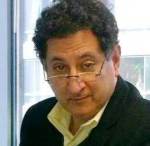Updated
Tourism and Aeronautics Sectors Show Great Results; Renewable Energy Experts Meet in Marrakech; Ties Strengthen with China and Indonesia; and Seafood Sector Exports are Set to Rise – Jean R. AbiNader
February 16, 2018
Tourism results for 2017 were recently announced and Morocco recorded 11.35 million tourists, a 10% increase over 2016 and a new record for the sector. European visitors grew by 15% from Germany, 8% from Spain and France, and 9% from Holland and Italy. The pattern of rising arrivals from new markets continued as Chinese arrivals jumped 151%, with Japanese rising 39% and Brazilians up 38%. Marrakech attracted a 17% increase in 2017 with Agadir welcoming 11% more visitors. In terms of new hot spots, Fez saw on increase of 39% while tourists to Ouarzazate jumped 37%.
Two articles in Morocco World News highlighted the continued progress in the aeronautics sector. The first took note of the more than 20 million passengers who passed through one of Morocco’s 17 airports this past year, another record year. Tangier’s airport saw an increase of 26% over last year while Fez welcomed its new facility at SaissAirport. Of course, as Morocco hosts more international events, such as the recent African National Championship [soccer], it will continue to set records and welcome both domestic and international travelers.
The article provided a list of facts and figures about aviation in the country that are both interesting and entertaining. For example, there are 54 aircraft in the RAM fleet; the Menara Airport in Marrakech won two international awards for quality and design last year; and RAM flies to more than 30 African countries with 850 regularly scheduled flights per month.
Overseas, RAM’s longest flight is to Sao Paulo and it is the first airline in the Arab world to have non-stop flights to New York City; while last spring, Emirates Air began using a double-decker Airbus A380 for its Dubai-Casablanca service.
In a companion article, Morocco World News reported the signing of an agreement between Boeing and Morocco to create a new manufacturing hub in Tangier, estimated to eventually employ 8,700 workers and generate $1 billion annually in exports. This is part of the larger strategy announced last year to attract 120 suppliers and subcontractors to support the aeronautics supply chain in Morocco. According to the article, “Morocco is now home to over 110 aerospace related corporations that specialize in metalworking, electronics and avionics, composite manufacturing, boiler making, maintenance, repair, technical support, assembly of sub-structures and manufacturing of auxiliary parts.”
One of the keys to Morocco’s success is the the Institut des métiers de I’aeronautique (IMA), a public-private partnership to ensure that Moroccans have the training in the advanced technical skills required in aerospace manufacturing and engineering. Working with the companies, Morocco’s technical institute designs, develops, and delivers curricula tailored to the industry’s needs.
This week, the spotlight is once again on Morocco’s renewable energy sector. The International Congress on Renewable Energy “Photovotaica” is being held in Marrakech to explore the growth of this sector across Africa both in terms of advances in technology and assessing the environmental impact of various technologies. A collaborative effort of the Ministries of Energy and Mining, and Water and Sustainable Development along with MASEN, over 700 guests are expected.
Morocco Continues to Build Strong Ties to China in recent talks between the Minister of Equipment, Transportation, Logistics, and Water, Abdelkader Amara, and visiting Chinese Vice Minister of Commerce Qian Keming. According to coverage of the meetings, “Amara commended the level of cooperation between Morocco and China…while Qian…added that bilateral cooperation resulted in the implementation of important investment projects in several areas, including infrastructure. Among the proects discussed with the development of Kenitra port and the extension of the coming high-speed railway between Marrakech and Agadir.
Morocco also held talks with Indonesia concerning a preferential trade agreement that would strengthen ties with the largest Muslim country. The draft agreement is being reviewed by the Moroccan government. Indonesia is interested in increasing its imports of phosphate from Morocco in order to boost its fertilizer industry. Talks also included a discussion of the interfaith dialogue efforts underway by both countries, which could be a base of cooperation and a model for other countries.
The seafood sector continues to be a priority as the Moroccan government recently announced plans to take full advantage of its over 2,200 miles of marine coastline in building its aquaculture industry. The national plan for fisheries, Halieutis, provides both objectives and mechanisms to develop the sector, including sustainable fisheries. Already the largest seafood producer in Africa with around 1.5 million tons produced annually, the fishing industry contributes 58% of Morocco’s agro-food exports, worth some $1.59 billion in 2015.
According to Seafood Source, “Currently, Spain, France, Italy, Germany, Portugal, the United States, the United Kingdom, and Belgium are the top importers of Moroccan seafood. Fisheries contribute 2.3% of Morocco’s GDP and create direct employment for 170,000 fisherfolk and indirect employment to an additional 500,000 people. It is estimated that three million people in Morocco depend on fisheries for their livelihoods.”
Malcolm Beveridge, who heads up FAO’s Aquaculture Branch within the Fisheries and Aquaculture Department, said he believes that the sector has strong potential to contribute to improving Morocco’s living standards, especially those of the poorest. “The work in which we are partnering with Morocco will help to ensure that aquaculture develops in an economically, socially, and environmentally sustainable manner,” he added.
